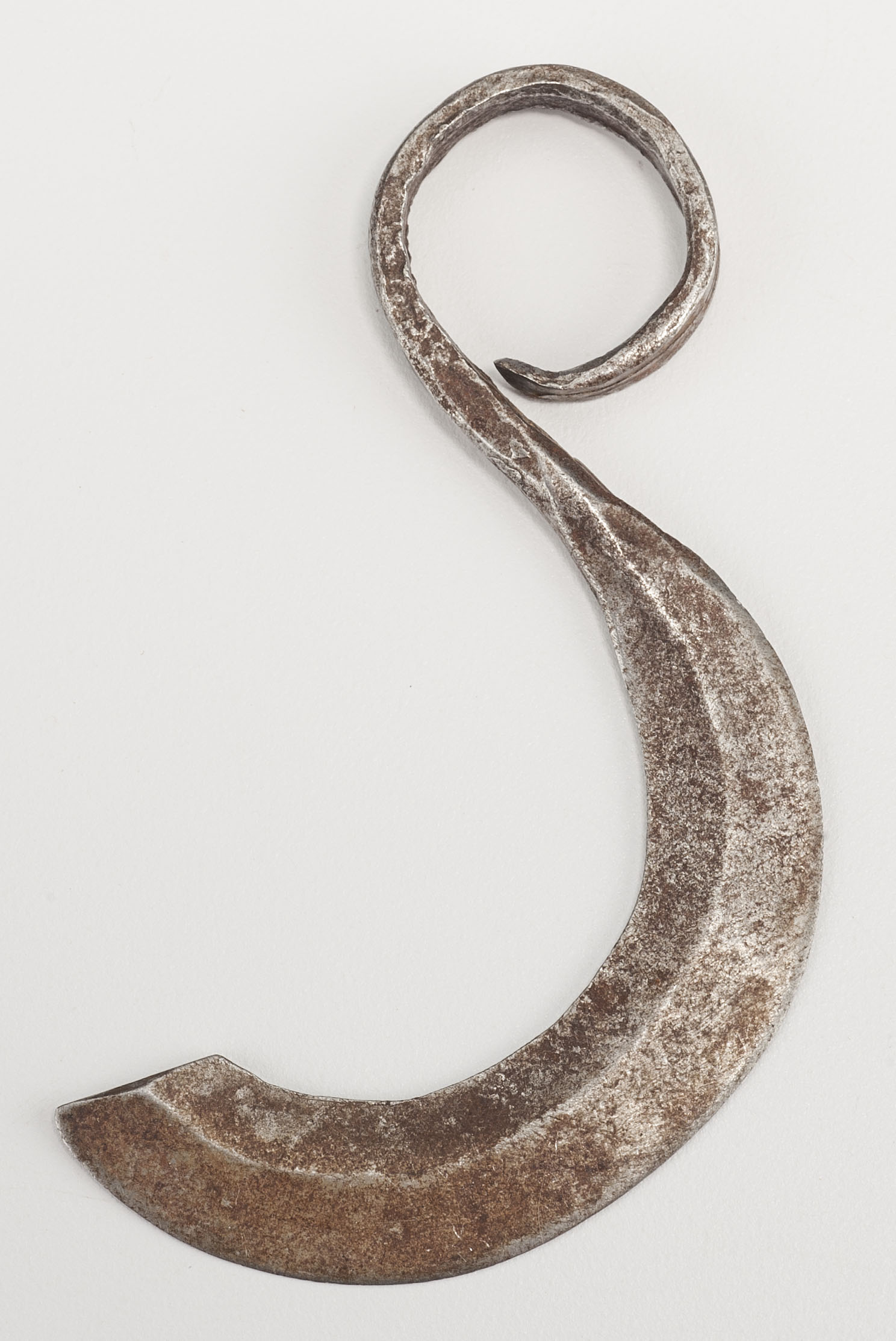On 26 February 2016, Indiana University Art Museum will open a special exhibition of a large collection of traditional Kenyan artwork that the museum purchased last year. This collection positons IU as the premier U.S. site for research in traditional Kenyan visual arts. We are excited to present four pieces from this collection in DailyArt and show them every Sunday from today until 28 February. Enjoy!
Turkana men used finger knives as weapons, tools, and jewelry. Also known as razor rings, these objects were worn, as the names suggests, as finger rings, with edges that are sharpened like knives. Though the elegant curve makes the ring visually appealing, it was primarily utilitarian — used in fighting, for skinning an animal, for cutting or spearing meat, or (according to some sources) as a tool for extracting teeth.
In addition to finger knives, Turkana men also wore another form of lethal jewelry: razor bracelets or wrist knives, which are steel or iron disk bracelets with sharpened outer edges. Both finger and wrist knives were banned by the British during the colonial period in an effort to maintain peace among the Turkana, who had the reputation of being fierce fighters — not only with other ethnic groups, but also with each other.
Finger rings, like many objects from Africa, were not considered worthy of display in art museums for many years. However, "African Furniture and Decorative Arts," a 1972 exhibition at New York’s Museum of Modern Art curated by Roy Sieber, spurred a growing recognition of the importance of African decorative arts, as did its accompanying catalogue of the same name. In addition, many African jewelry forms have bold forms that are similar to those of Western sculptures, an aspect many collectors of contemporary art find appealing.




Finger Knife
steel • 8.9 x 8.9 x 4.4 cm
 Unknown Artist
Unknown Artist